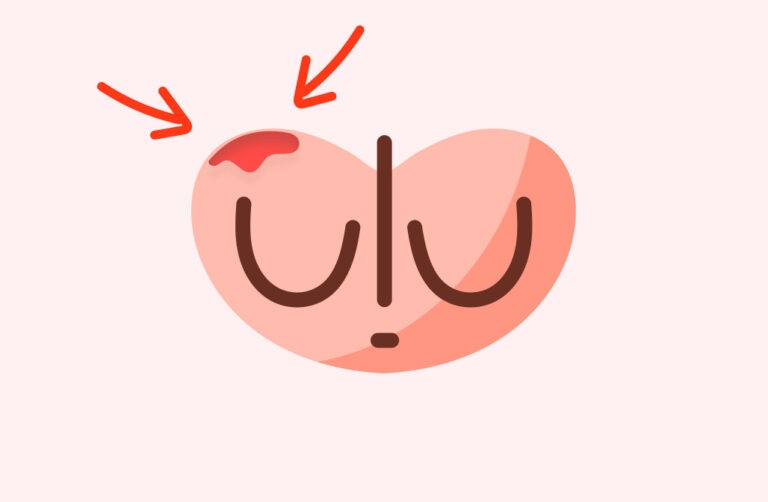Welcoming a newborn instantly opens a world of questions—one of the first mysteries parents meet is the enigmatic sucking reflex. Why does your baby search so instinctively for the breast or bottle? Is that sleepy, fleeting suck enough to nourish, or should it be stronger, more rhythmic? Let’s explore the underpinnings of this tiny yet mighty reflex: its vital role in feeding, the science behind each precious swallow, and the sometimes puzzling signals that invite parents to adapt or seek guidance. From those tense moments in the maternity ward—when feeding routines strain nerves and expectations—to the gentle moments of nighttime comfort, understanding the sucking reflex can smooth worries and empower your parental journey. Here, you’ll find answers born from neonatal science and pediatric expertise: the mechanics of sucking, tips to nurture an effective reflex, clarity about variations in newborn sucking, and guidance on when to turn to professionals for extra support.
Sucking Reflex: Definition and Its Vital Role for Newborns
What exactly is the sucking reflex? This fascinating, automatic behavior emerges before birth—often visible on prenatal ultrasounds as a thumb in the mouth. Touch the roof of a newborn’s mouth or the delicate skin near their lips, and witness the instant, involuntary sucking motion. More than cute—this reflex secures a baby’s earliest source of nutrients and water, requiring an elegant interplay of muscular contraction and neural circuitry. But what’s going on inside that tiny mouth? The process involves the lips, tongue, jaw, palate, and throat muscles, all working together with the brainstem’s orchestration. This is no trivial act: a strong sucking reflex allows babies to safely latch and draw out milk, a process essential for hydration, growth, and—less obviously—the foundation of future oral motor skills like chewing and even speaking.
You might wonder, is all sucking the same? Not quite. Nutritive sucking—those moments your baby draws in milk—demands high-precision choreography: sucking, swallowing, breathing, all in a repeated cycle. Then there’s non-nutritive sucking: sucking a finger, a pacifier, or even simply making sucking motions. While no milk is transferred, this type offers a deep sense of comfort and serves emotional regulation. Both types of sucking are normal, healthy parts of early infancy.
The sucking reflex is often mentioned alongside other primitive reflexes—like the rooting reflex, which helps your infant find the nipple by turning toward a touch on the cheek. Or the grasp reflex, those intrigued fingers curling around your pinky. Only the sucking reflex, though, powers the extraction of milk. Its decline marks a developmental leap as voluntary, purposeful oral movements take over.
Why focus so intently on this reflex? If the sucking reflex is absent or weak, babies can become quickly fatigued or frustrated, feeding becomes inefficient, and the risk of dehydration or low weight gain can rise. The stakes are high, especially for preterm infants or babies with medical challenges.
The Development of the Sucking Reflex
It’s breathtaking to think that by the 32nd week of pregnancy—even before a baby greets the world—the basic circuitry for the sucking reflex is coming online, driven by the brainstem. By 36 weeks, most babies possess a mature reflex, though preterm infants may need extra time and support to master these complex rhythms. For these early arrivals, tube feeding or specialized interventions may temporarily supplement oral feeds until coordination improves.
With every feed—each practice lap—oral muscles grow stronger. Swallowing becomes more coordinated, and the rhythm tightens. Across weeks, the involuntary reflex gives way to genuinely controlled, voluntary sucking motions. The transition is not just a milestone; it’s a window into the maturing nervous system. This journey from reflex to skill lays the groundwork for everything from self-feeding with solids to clear speech.
The Physiology and Functioning of the Sucking Reflex
Peek beneath the surface, and you’ll find the sucking reflex powered by extraordinary neuromuscular coordination. When a nipple (or pacifier, or finger) stimulates receptors in the infant’s palate, signals race to the brainstem, triggering a cascade of responses in facial, oral, and throat muscles. The true art lies in synchronizing three acts: sucking, swallowing, and—critically—breathing. Babies draw the nipple into the mouth, use the tongue to press it rhythmically upward, creating suction. Milk is extracted as the jaw moves, and—between bursts of sucking—tiny pauses allow for safe, unhurried breaths. When any aspect of this ballet falters, babies may gulp, cough, or tire rapidly.
The journey from the first latch to successful swallowing unfolds in two main phases. First, the latch phase invites the baby to take a wide, deep mouthful, lips flared, chin pressing into breast or bottle. Proper latch creates a seal—without which milk transfer is poor and maternal discomfort may rise. Then comes the extraction phase: tongue pressing, suction building, and a pulsing rhythm that signals swift, effective feeding.
Assessing the Sucking Reflex: When to Watch, When to Worry
Is your baby’s sucking reflex up to the task? At home, parents watch for eager, rhythmic sucking—those first strong draws when the nipple or bottle touches the lips. A healthy baby starts sucking almost at once, maintains a coordinated pace, and appears full and content after feeding. Feeding stretches longer than expected? Clicks or smacks during sucking? Baby tiring after just a few sips or not gaining weight? These may be gentle early clues that sucking—and therefore feeding—needs extra support or professional input.
Medical and feeding professionals don’t rely on instinct alone. They use structured observations and tools—like the Neonatal Oral-Motor Assessment Scale (NOMAS), or the Infant Breastfeeding Assessment Tool (IBFAT)—to evaluate pattern, suction strength, coordination, and endurance. Sometimes, devices help measure the negative pressure generated by the tongue and jaw, offering a granular look at what’s working and where help is needed.
Why Weak or Absent Sucking Reflex Deserves Careful Focus
A weak sucking reflex weighs heavily on parents’ minds—and for good reason. Babies with a diminished ability to latch or suck may struggle to extract milk efficiently. This can quickly lead to poor weight gain, dehydration, and even avoidable hospital admissions, especially in the most vulnerable (preterm, neurologically affected, or unwell infants).
But the consequences are more than physical. Repeated feeding struggles—when every bottle or breast becomes a battleground—can trigger exhaustion for the baby and unspoken frustration or discouragement for parents. Sometimes, weak sucking signals underlying challenges such as tongue-tie (ankyloglossia), a cleft palate, or neurological vulnerabilities. Early recognition and intervention—from supplementary feeding to tailored oral-motor exercises—can transform feeding from a daily ordeal to a rewarding moment of connection.
Typical Issues and Their Roots: Sucking Reflex in Premature or Challenging Situations
Premature babies frequently display an immature sucking reflex—their nervous systems simply haven’t had time to wire up the full feeding sequence. Some term infants face challenges, too: tongue-tie, cleft lip or cleft palate, or even conditions like severe jaundice can alter tone and strength. A baby with difficulty latching might slip off repeatedly, require frequent rest, or spill milk out of the mouth. Non-nutritive sucking—on thumbs or pacifiers—offers solace, but, if overused well past infancy, may nudge dental alignment or affect oral muscle development. Choosing orthodontic pacifiers and considering phased weaning around age three can sidestep these issues.
Practical Ways to Support and Empower Your Baby’s Sucking Reflex
Daily feeds offer moments for gentle learning and muscle training. Optimal positioning is key: hold your baby so that their body is well-aligned, the head supported, and the chin brushing the breast or bottle. A wide-open mouth with lips pushed outward, soft cheeks, and an upright position help ensure a deep latch and strong suction.
You can gently encourage a sluggish sucking reflex. Try lightly touching or massaging your baby’s cheeks or chin. If fatigue sets in quickly, use shorter, more frequent sessions and allow your baby to set their own pace. For babies struggling at the breast, a nipple shield or certain supportive holds like the football or cross-cradle position can assist effective sucking and milk transfer.
Pacifiers hold a special place—soothing, sleep-promoting, and sometimes even reducing the risk of sudden infant death syndrome (SIDS). But their use invites questions. Does early pacifier introduction threaten successful breastfeeding? Can prolonged use alter tooth alignment or oral development? The pediatric consensus often suggests waiting until breastfeeding is well established (usually at three to four weeks) and gradually weaning before preschool years.
For preterm or weak infants, oral stimulation—touching the lips, palate, or tongue—and skin-to-skin contact (kangaroo care) can accelerate the transition to robust sucking. In some cases, feeding tubes may serve as a bridge until oral coordination matures. Collaboration with lactation consultants, speech or occupational therapists may spark dramatic gains in both parental confidence and baby’s feeding success.
Breastfeeding and the Sucking Reflex: A Delicate Interplay
Breastfeeding relies entirely on an intact, effective sucking reflex. A baby who can latch deeply and generate steady suction will efficiently trigger the let-down reflex, drawing milk while coordinating safe breathing and swallowing. If a structural or neurological challenge (like tongue-tie or delayed coordination) disrupts any part of this process, maternal pain, frustration, or slow milk transfer often follow. Parents facing these challenges can lean on thoughtful positioning, gentle stimulation to rouse a drowsy infant, and prompt consultation with a lactation specialist for problem-solving and support.
Sucking Reflex and Parental Decision-Making
Faced with choices—pacifier, early weaning, bottle or breast—parents must weigh benefits and risks. Pacifiers may settle restless evenings and deliver real reassurance, while prolonged use may urge future dental or speech considerations. Early weaning, sometimes chosen for necessity, sometimes for convenience, should be graded and gentle to preserve the emotional connection built at the breast or bottle. Skin-to-skin contact can soften transitions and reassure both parent and child. Each route is valid—and periodic conversation with your child’s healthcare provider brings peace of mind.
The Evolution from Reflex to Voluntary Mastery
The sucking reflex is a temporary starter mechanism—by around four months of age, babies gradually shed their reflexive sucking and begin practicing voluntary, purposeful oral movement. This process is not only awe-inspiring; it signals readiness for new forms of feeding, cup drinking, and the first sounds of language. Should the reflex linger past four months, or impair transitions to solids, a developmental check-up is a wise step to clarify and address any underlying concerns.
When to Reach Out: Warning Signs and Support
Feeding, at first, is a learning curve filled with small victories and sometimes setbacks. Some warning lights deserve attention: prolonged or difficult feeds, scant weight gain, infrequent wet diapers, or a baby who seems perpetually unsatisfied or fatigued at the breast. Health professionals might employ structured assessments or even a videofluoroscopic swallow study (VFSS) to pinpoint hidden hurdles. Support from a multidisciplinary team—pediatricians, lactation experts, therapists—can be transformative.
Key Takeaways
- The sucking reflex is an instinctual marvel—foundational not only for nutrition, but also for emotional comfort and oral development, with roots stretching back to fetal life.
- A strong, coordinated sucking reflex powers growth, hydration, and orofacial muscle building—yet may appear immature in premature or medically fragile infants.
- Practical daily support—gentle stimulation, proper positioning, and responsive feeding rhythms—nurtures early feeding skills and confidence.
- Non-nutritive sucking (pacifiers, thumbs) soothes and reassures, yet prolonged use can tip into dental or speech territory if not phased out over time.
- When sucking is weak, absent, or slow to mature—especially with poor weight gain or feeding fatigue—reaching out to a pediatrician, lactation consultant, or therapist offers practical solutions and emotional relief.
- Early support can bring huge dividends, transforming feeding from a point of stress into a connecting, nurturing experience for your family.
Need more tailored guidance or want to track your baby’s progress? Download the Heloa app for personalized advice and free pediatric health questionnaires, designed to keep you one step ahead in your child’s early years.
Questions Parents Ask
Can a baby be born without a sucking reflex?
Very rarely, some newborns may show a weak or absent sucking reflex. This can be linked to prematurity, neurological concerns, or certain medical conditions. While this situation peut sembler inquiétante au début, rassurez-vous : il existe de nombreuses solutions et prises en charge adaptées. L’équipe médicale accompagne généralement ces bébés avec des méthodes personnalisées pour stimuler et soutenir le développement du réflexe—par exemple, la stimulation orale douce ou parfois une aide temporaire à l’alimentation. Avec du temps et un accompagnement adapté, beaucoup d’enfants rattrapent leur propre rythme.
How long does the sucking reflex last?
The sucking reflex usually fades around four to six months of age. It is replaced by more voluntary and controlled actions that préparent your child for new ways of exploring and feeding. If you notice that this reflex persists significantly beyond this period or seems to interfere with eating or development, il est important de consulter un professionnel de santé pour un avis rassurant.
What happens if the sucking reflex is not present at birth?
If a newborn’s sucking reflex is not present right after birth, cela peut surprendre ou inquiéter. Plusieurs facteurs peuvent expliquer ce phénomène, notamment la prématurité ou une maturation encore en cours du système nerveux. Les professionnels de santé évaluent d’autres réflexes et la capacité de l’enfant à s’alimenter de différentes manières pour adapter rapidement le soutien. Dans de nombreux cas, ce réflexe émerge naturellement avec un peu de temps et des soins adaptés. N’hésitez pas à échanger vos inquiétudes avec l’équipe médicale, qui saura trouver avec vous les meilleures solutions.










